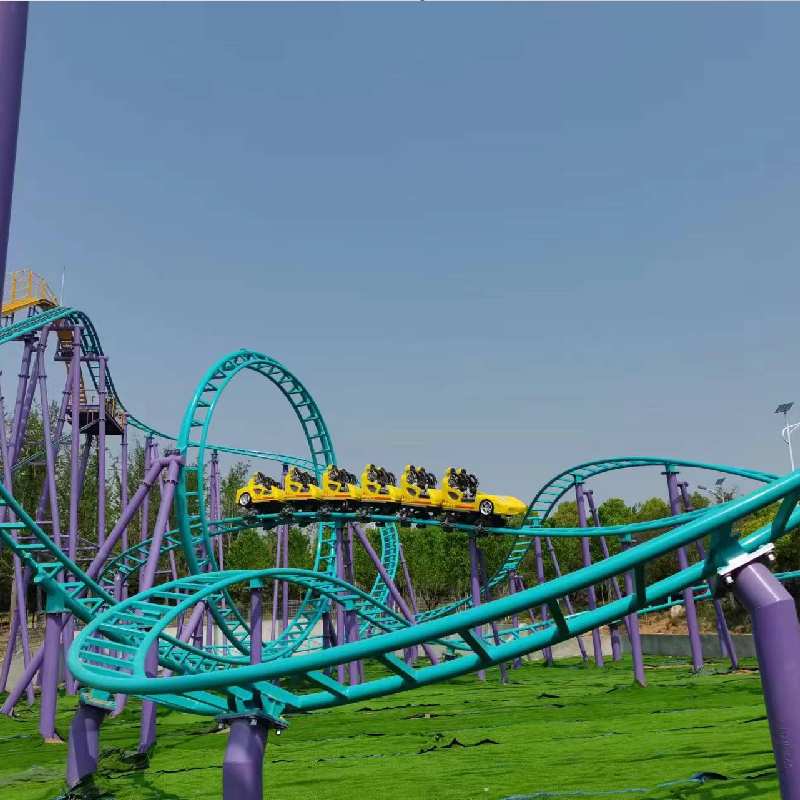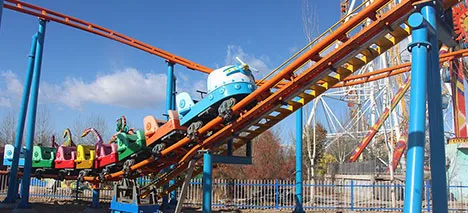- Albanian
- Arabic
- Belarusian
- Bengali
- Czech
- English
- French
- German
- Hebrew
- Hungarian
- Indonesian
- irish
- Italian
- Japanese
- kazakh
- Persian
- Russian
- Thai
- Uzbek
- Vietnamese
Ақп . 16, 2025 10:31
Back to list
Baoshijie Roller Coaster
Designing a roller coaster is a fascinating blend of art and engineering, where mathematics plays a pivotal role. Using functions to shape the thrilling contours of a roller coaster can lead to a ride that is not only exhilarating but also safe. In the world of theme parks, the design process begins with a deep understanding of various mathematical functions and how they can be used to predict the behavior of the roller coaster along the track.
The design process of a roller coaster also incorporates multivariable calculus for crafting intricate track layouts that traverse complex geometries and landscapes. Here, vector functions come into play, translating the algebraic functions into three-dimensional space. This rich complexity allows the creation of unique paths that enhance the visual and physical experience of the ride — from spiraling corkscrews to stomach-churning inversions. When designing a roller coaster with functions, computational simulations are indispensable tools. These simulations incorporate all relevant mathematical functions to simulate the dynamics of the proposed design before any physical construction begins. Through these digital trial runs, engineers can refine the track layouts and resolve potential safety concerns, ensuring that the final design yields both an aesthetically pleasing structure and an unforgettable rider experience. Collaborating with expert mathematicians and engineers injects a high degree of reliability and authority in designing roller coasters. Their in-depth expertise in applying complex mathematical functions to real-world problems ensures that each ride is optimized for safety and thrill. This collaboration stands as a testament to the industry's commitment to trust and safety while delivering cutting-edge entertainment. In conclusion, the art of designing a roller coaster with functions is a sophisticated interplay between mathematics and creativity. Incorporating various mathematical functions not only ensures structural integrity but also amplifies the sensory experience of the ride. This integration of expertise, bolstered by advanced computational tools, underpins the creation of roller coasters that continue to push boundaries while maintaining an unwavering focus on safety and reliability. As amusement parks evolve, so too will the mathematical precision and creativity that go into crafting these modern marvels, ensuring that roller coasters remain timeless icons of excitement and innovation.


The design process of a roller coaster also incorporates multivariable calculus for crafting intricate track layouts that traverse complex geometries and landscapes. Here, vector functions come into play, translating the algebraic functions into three-dimensional space. This rich complexity allows the creation of unique paths that enhance the visual and physical experience of the ride — from spiraling corkscrews to stomach-churning inversions. When designing a roller coaster with functions, computational simulations are indispensable tools. These simulations incorporate all relevant mathematical functions to simulate the dynamics of the proposed design before any physical construction begins. Through these digital trial runs, engineers can refine the track layouts and resolve potential safety concerns, ensuring that the final design yields both an aesthetically pleasing structure and an unforgettable rider experience. Collaborating with expert mathematicians and engineers injects a high degree of reliability and authority in designing roller coasters. Their in-depth expertise in applying complex mathematical functions to real-world problems ensures that each ride is optimized for safety and thrill. This collaboration stands as a testament to the industry's commitment to trust and safety while delivering cutting-edge entertainment. In conclusion, the art of designing a roller coaster with functions is a sophisticated interplay between mathematics and creativity. Incorporating various mathematical functions not only ensures structural integrity but also amplifies the sensory experience of the ride. This integration of expertise, bolstered by advanced computational tools, underpins the creation of roller coasters that continue to push boundaries while maintaining an unwavering focus on safety and reliability. As amusement parks evolve, so too will the mathematical precision and creativity that go into crafting these modern marvels, ensuring that roller coasters remain timeless icons of excitement and innovation.
Next:
Latest news
-
Durable Ferris Wheel Rides Big Wheel Attractions & RentalsMay.23,2025
-
Shanghai Roller Coaster Rides High-Speed Thrills & Family FunMay.23,2025
-
Top Action Karate Movies 2024 - Best Martial Arts Films in TheatersMay.23,2025
-
Safe & Fun Kiddie Carnival Rides for Sale Best Deals!May.22,2025
-
High Thrill Rides Conquer the High Roller Ferris Wheel & CoastersMay.22,2025
-
Inside Ferris Wheel Cabins Premium Comfort & Safety FeaturesMay.21,2025
